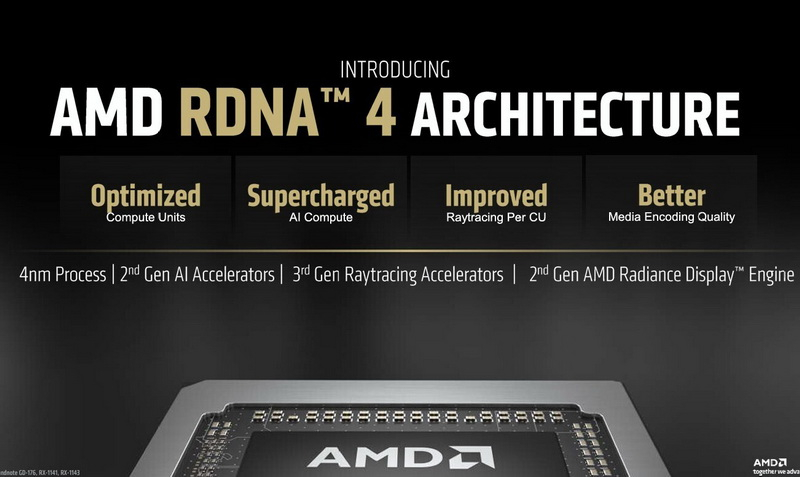AMD reveals RDNA 4 development priorities, explains FSR 4 limitations, and debunks rumors about Radeon RX 9070 performance


In a conversation with reporters, AMD representatives David McAfee and Frank Azor shared fresh details about the FSR 4 scaling technology, talked about priorities in the development of the new RDNA 4 graphics architecture, and also urged not to believe rumors and leaks about the performance of the new Radeon RX 9070 XT and RX 9070 video cards.


Image Source: AMD
As part of the official presentation on January 6, AMD only briefly mentioned the new FSR 4 scaling technology, which is in fact a set of technologies. Users noticed that, according to the presentation slide, FSR 4 will be available only on Radeon RX 9070 series video cards and only in those games that already support FSR 3.1 scaling technology.
AMD explained that FSR 4 technology uses a machine learning (ML)-based algorithm to reconstruct parts in the Super Resolution component, and the new RDNA 4 graphics architecture plays a decisive role in this, providing a significant increase in MLops (machine learning operation speed) for compared to previous generations. Therefore, FSR 4 will initially only be available for Radeon RX 9000 graphics cards. However, the company plans to evaluate previous-generation graphics cards that can provide the necessary level of AI acceleration to run the SR algorithm in FSR 4 without severely compromising performance or increasing latency.
With the new RDNA 4 graphics architecture, AMD focused on improving performance in the areas that matter most to gamers. As part of the new generation of architecture, we can expect improvements in ray tracing efficiency, as well as significant improvements in MLops (AI acceleration) to support FSR 4 and ML Super Resolution.
The second priority in the development of RDNA 4 was to improve the overall efficiency of each GPU component. It’s not just about power efficiency, but also the factors that allow AMD to price competitively on RDNA 4-based graphics cards. This includes choosing the right manufacturing process, the right die size, and the right memory type. Thus, AMD is preparing for tough price competition with Nvidia and, possibly, Intel, avoiding exotic solutions that could complicate the market of its products.
The third priority in the development of RDNA 4 is related to accelerating the launch of finished products to market. AMD was significantly behind Nvidia with the release of last-generation video cards: the flagship RX 7900 models appeared when Nvidia had already introduced most of the GeForce RTX 4000 line. This time, AMD is aiming to release new video cards as early as possible.
Finally, company representatives denied rumors about the performance of Radeon RX 9070 video cards that were spreading on the Internet: “No one has the final driver, not even the video card manufacturers, so do not believe the performance claims [of our cards] on the Internet.”
Recent Posts
Unique supercomputer Anton 3 for molecular dynamics tasks put into operation
The Pittsburgh Supercomputer Center (PSC) has launched the Anton 3 computing complex, a specialized next-generation…
Unique supercomputer Anton 3 for molecular dynamics tasks put into operation
The Pittsburgh Supercomputer Center (PSC) has launched the Anton 3 computing complex, a specialized next-generation…
‘The Journey Is More Important Than the Destination’: Skyblivion Lead Reacts to The Elder Scrolls IV: Oblivion Remastered Leak
In addition to the official remake of the cult fantasy role-playing game The Elder Scrolls…
‘The Journey Is More Important Than the Destination’: Skyblivion Lead Reacts to The Elder Scrolls IV: Oblivion Remastered Leak
In addition to the official remake of the cult fantasy role-playing game The Elder Scrolls…
Planescape: Torment Could Have Got a Sequel — Former Dragon Age and Fallout: New Vegas Writers Were Working on It
The famous fantasy role-playing game Planescape: Torment from the developers of Black Isle Studios has…
Planescape: Torment Could Have Got a Sequel — Former Dragon Age and Fallout: New Vegas Writers Were Working on It
The famous fantasy role-playing game Planescape: Torment from the developers of Black Isle Studios has…